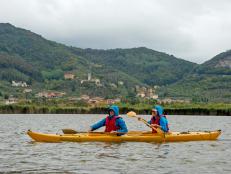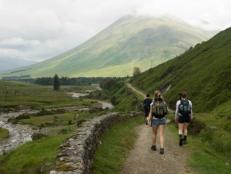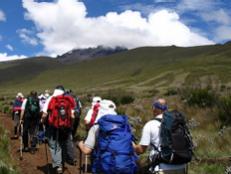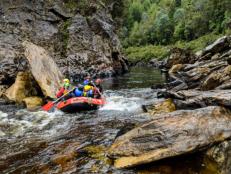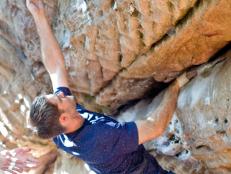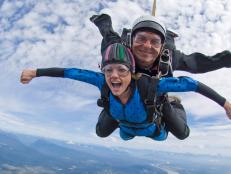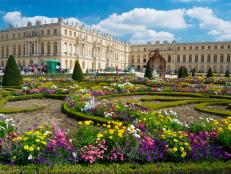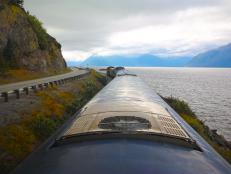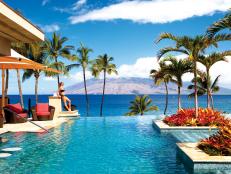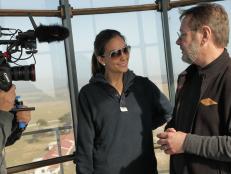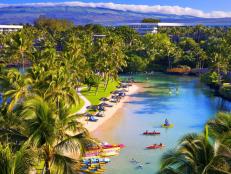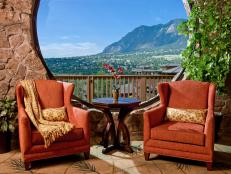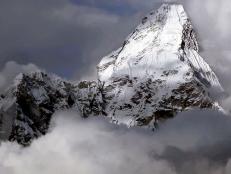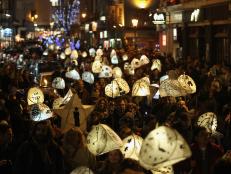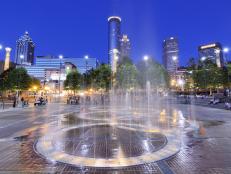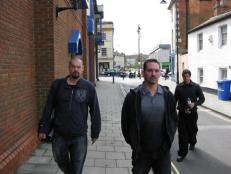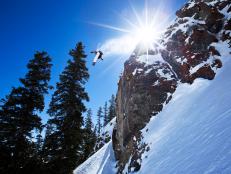5 Ways to Conquer Europe’s Most Active Volcano
Mount Etna towers over the island of Sicily, spewing fumes, ash and lava in a constant reminder that our planet is still untamed. Here’s how you can visit it.

Joe Sills

Located on the eastern coast of Sicily, Mount Etna has become a siren to European travelers hoping to trade cobblestone streets for volcanic rock. Here, thousands of feet above the Mediterranean Sea below, Europe’s most active volcano places travelers in a moonscape of craters, cauldrons and clouds.
And while seeing Mount Etna is easy—you don’t even have to leave the bustling city of Catania to catch a view of its peak—a short drive north will give true adventure seekers numerous options for getting hands-on with the living, breathing volcano that’s been erupting almost nonstop for half a million years. Mount Etna’s close proximity to civilization makes it a popular tourist destination year-round, leaving travelers with at least five epic options for getting your hands dirty on its fiery slopes:
1. Razor Sharp Relay

Joe Sills
The primary hiking trails to Etna’s summit run through Rifugio Sapienza. This alpine outpost offers parking, bars and restaurants, as well as several outfitters that specialize in guided hiking trips to the summit. From their doorsteps, well-trodden trails carry hikers up 4,500 feet towards the Etna’s nearly 11,000-foot summit. Most trails follow a route through old lava fields and underneath a cable car, before splitting off towards the easily identifiable summit in the distance.

Joe Sills
Hikers hoping to summit Etna should allow a full day for the trek, as most groups take about four hours to reach the top. Essential gear includes a hearty supply of water and sun protection: there’s no shade this far up the mountain. Trekking poles (recommended) and helmets are available for rent in Rifugio Sapienza.
2. Cable Car Cruise

Joe Sills
For about 30 euro, you can board the Funivia Etna cable car from Rifugio Sapienza’s 6,500-foot base camp and ascend to a cozy cafe at 8,200 feet. The ride to the top takes about 15 minutes, and gives passengers a birds-eye view of the slopes, as well as some of the numerous cones, lava fields and, worryingly, cable car ruins left by earlier eruptions.

Joe Sills
The new Funivia Etna cable car extends well beyond the volcano’s derelict cable car routes, and offers less mobile travelers—or hikers looking for a shortcut—an easy way to gain some elevation. Drinks and snacks are available at the top!
3. Unimog Expedition

Joe Sills
Unimogs are an uncommon sight in the U.S., but the massive, all-wheel drive buses are a modern fixture of Etna’s landscape. Most of the volcano’s Unimog fleet is located at the top of the aforementioned cable car route. From there, travelers can grab a seat on a guided ‘monster truck’ tour of the mountain’s craters and lava fields.
Unimog expeditions run rain or shine, and they’re even available at times when the mountain is covered in snow. However, the beastly vehicles don’t drive all the way up the mountain. Unimog roads stop at 9,800 feet, meaning you’ll still have to make the trek on foot if you want to visit Etna’s summit.
The Unimogs are also subject to crater activity, as the routes can occasionally be closed by the volcano’s temper. Hey, even a monster truck can’t conquer Mother Earth.
4. ATV Attack

Joe Sills
If a Unimog sounds too crowded or too clumsy for you, multiple quad bike companies operate ATV tours on Mount Etna. These tours typically last two to four hours, and offer the chance to separate from the packs of trail-bound hikers and bus-bound Unimoggers.
ATV tours are available from Rifugio Sapienza; however, other companies operate from further down the mountain, allowing for an otherworldly ride through volcanic pine forests, in addition to the lava fields above. As with Unimogs, ATVs do not summit Etna; however, personalized tours offer you the option to do so on foot, or to stay overnight in the mountain’s wilderness.
Typically, prices for an ATV tour start at 50 euro and range upwards depending on how much time you want to spend on destruction’s doorstep.
5. Volcano Skiing

Joe Sills
Even in summer months, it’s not uncommon for Etna to be capped in snow. But in the winter, that snow is put to good use when the ski resorts of Piano Provenzana and Nicolosi (pictured) open for season. From November to April, Etna offers silky smooth skiing in one of the most surreal landscapes on Earth. And, as a bonus, the ski passes on Mount Etna are some of the most affordable in Italy, with average rates of about 25 euro.
Winter visitors to Etna can hit the slopes during the day, then make their way back to Nicolosi by mid-afternoon for aperitivo, an hours-long Italian culinary tradition filled with endless cocktails and appetizers.
There is one catch, however: The ski schedule is also subject to sudden change due to eruptions.
Flights to Catania are generally affordable, though somewhat sporadic, from major European cities like Paris, London and Barcelona, while daily routes and trains run from Rome. Whether you’re looking for a hands-on dance with fire and ice or a leisurely stroll through the bones of the Earth, Mount Etna is a must-see for geologic gurus traveling Europe.

